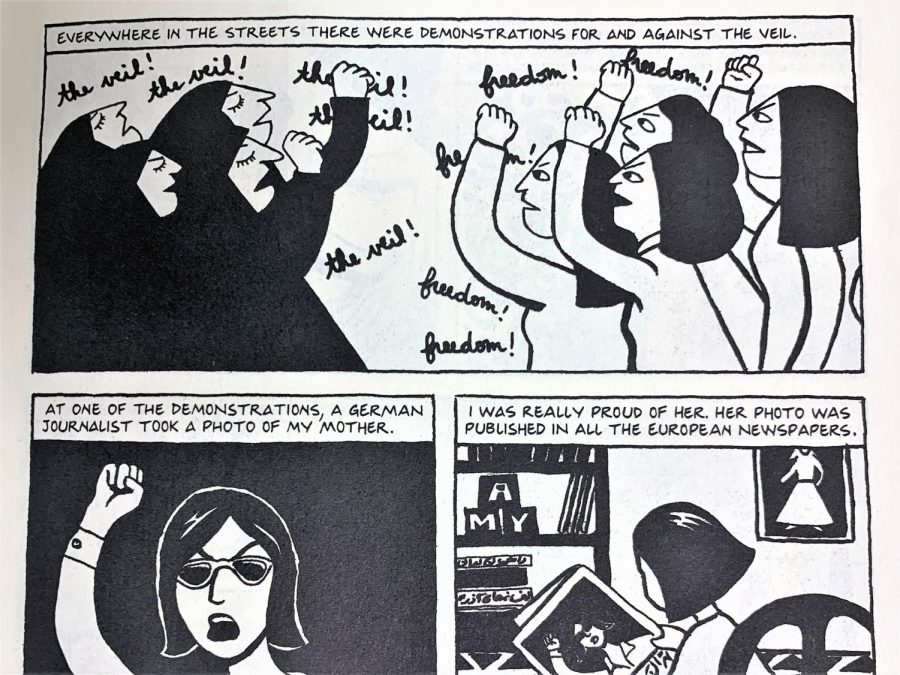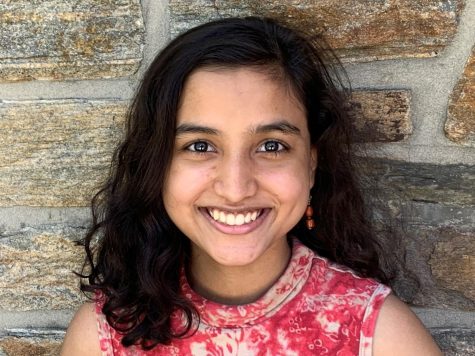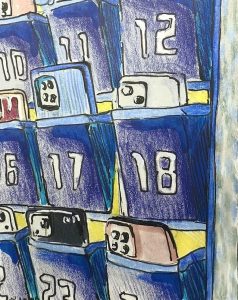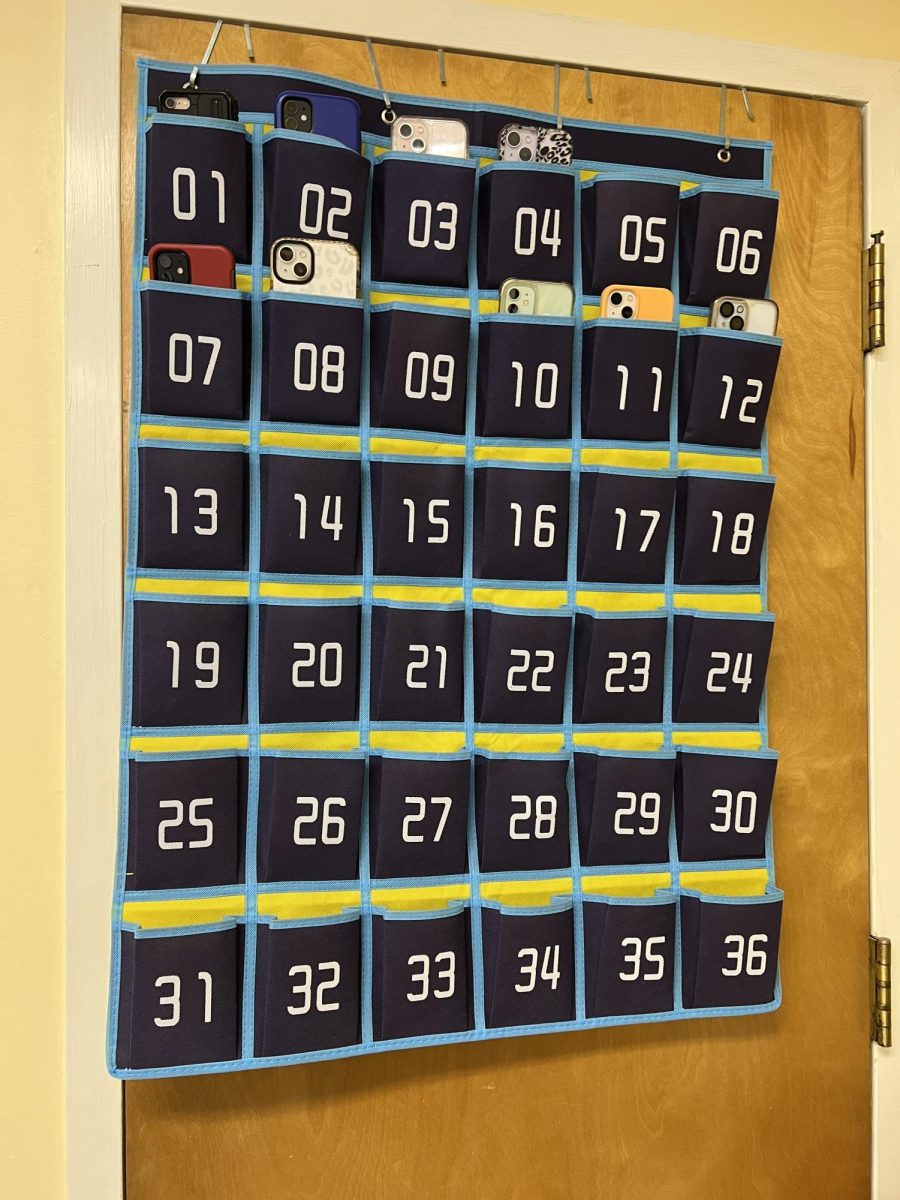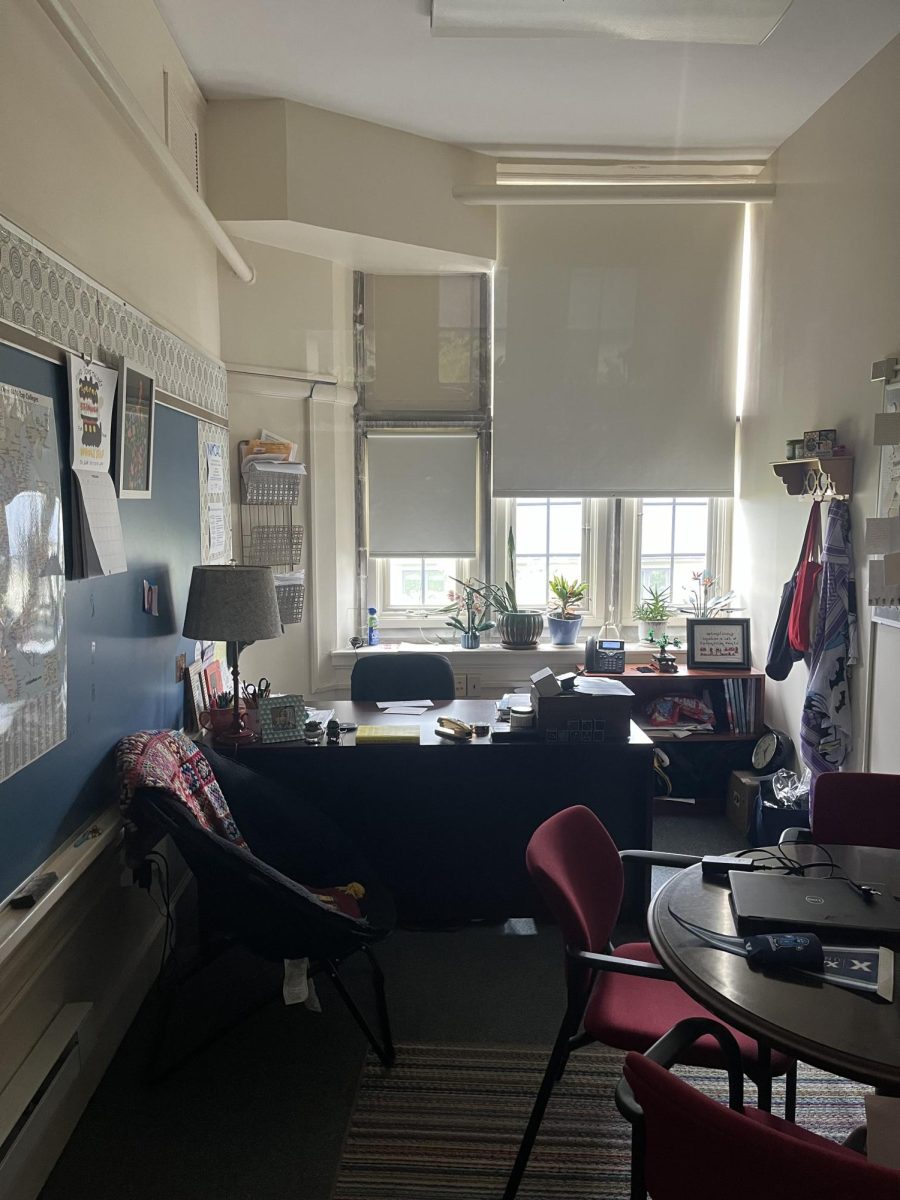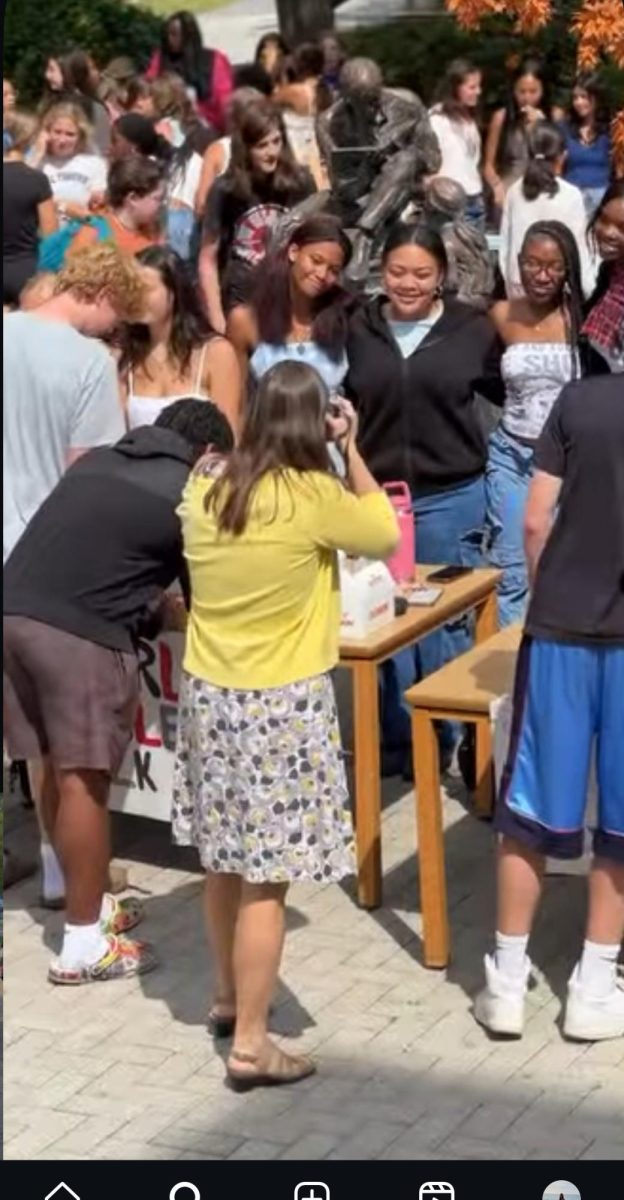Iran Protests Recall ‘Persepolis,’ Black Lives Matter
Across Iran, crowds – especially of young people – are protesting the suspicious death of a young woman in police custody.
Iranian women protest, in panels from Marjane Satrapi’s graphic novel Persepolis, published by Pantheon Books.
September 26, 2022
This weekend, angry protests continued across Iran.
They come in response to the death of Masha Amini, a 22-year-old woman. Ms. Amini was arrested on September 14th, for wearing her hijab, or headscarf, in an “improper” manner. She died in police custody on September 16th. While officials claim her death stemmed from a heart attack, her family says she never had any health or heart problems.
After the Islamic revolution, the hijab law was enacted in 1981, requiring all women to wear the hijab in a “proper” manner. For decades, Iranian women have been fighting against this law.
Friends students may find this history familiar, from their 9th- or 10th-grade summer reading of Persepolis by Marjane Satrapi. Ms. Satrapi’s graphic novel recounts firsthand some of the effects the Islamic Revolution had on young girls in Iran. Readers may remember the everyday ways in which Satrapi and her friends fought back against the strict new laws.
Like Satrapi and her friends in the ’80s, young women are yet again the driving force behind these recent protests. Videos circulated online show women burning and removing their hijabs, as well as publicly cutting off their hair.
Youth’s use of social media to protest this situation is reminiscent of the 2020 Black Lives Matter protests across the US.
“In a national survey of nearly 5,000 young people across the United States, ages 11 to 15, 70% of respondents reported engaging with the BLM movement through television, social media, or attending in-person demonstrations,” Yale News reporter Bill Hathaway wrote, citing a 2021 study on adolescent civic engagement.
Students may also remember Friends School’s direct involvement with vigils and peaceful protests on campus in support of the movement.
Social media has been a major component of the Iranian protests, as it has allowed communication between protesters. It has also brought more international attention to Iran.
But in response, the government shut down internet access, and access to specific apps like Instagram, for days. This has caused a delay in the information spreading between Iran and the rest of the world.
Iran’s response has also been incredibly violent. Authorities have responded to the protest with everything from bullets to tear gas. The most recent report of numbers from Hengaw Organization for Human Rights finds at least 733 injured people and 600 arrests in the Kurdistan region. They also find at least 17 people have died in the protests.
Kurdistan is home to a majority of the Kurdish population of Iran, and is where many of the protests are occurring. Amini was a part of this minority community that the New York Times writes “has long suffered discrimination.”
Therefore, many view the protests as a fight against more than just the hijab law. It’s a fight against oppression, and for human rights.

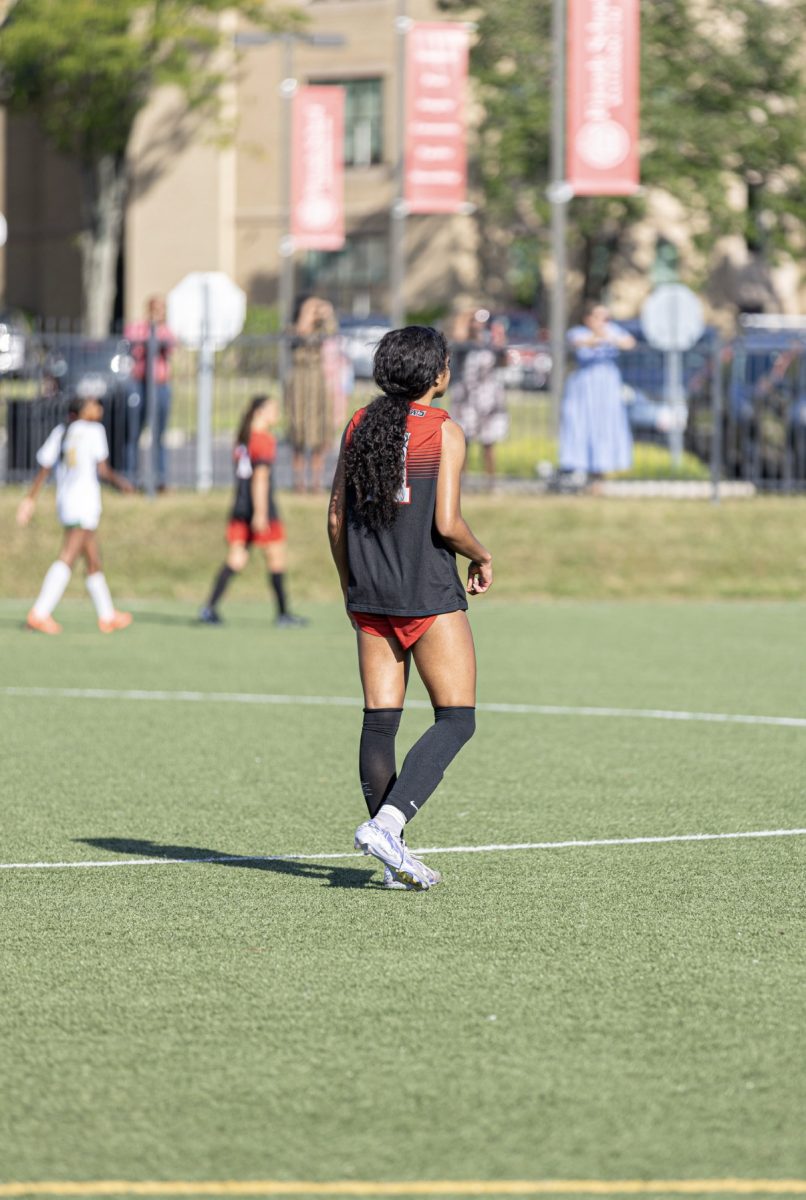
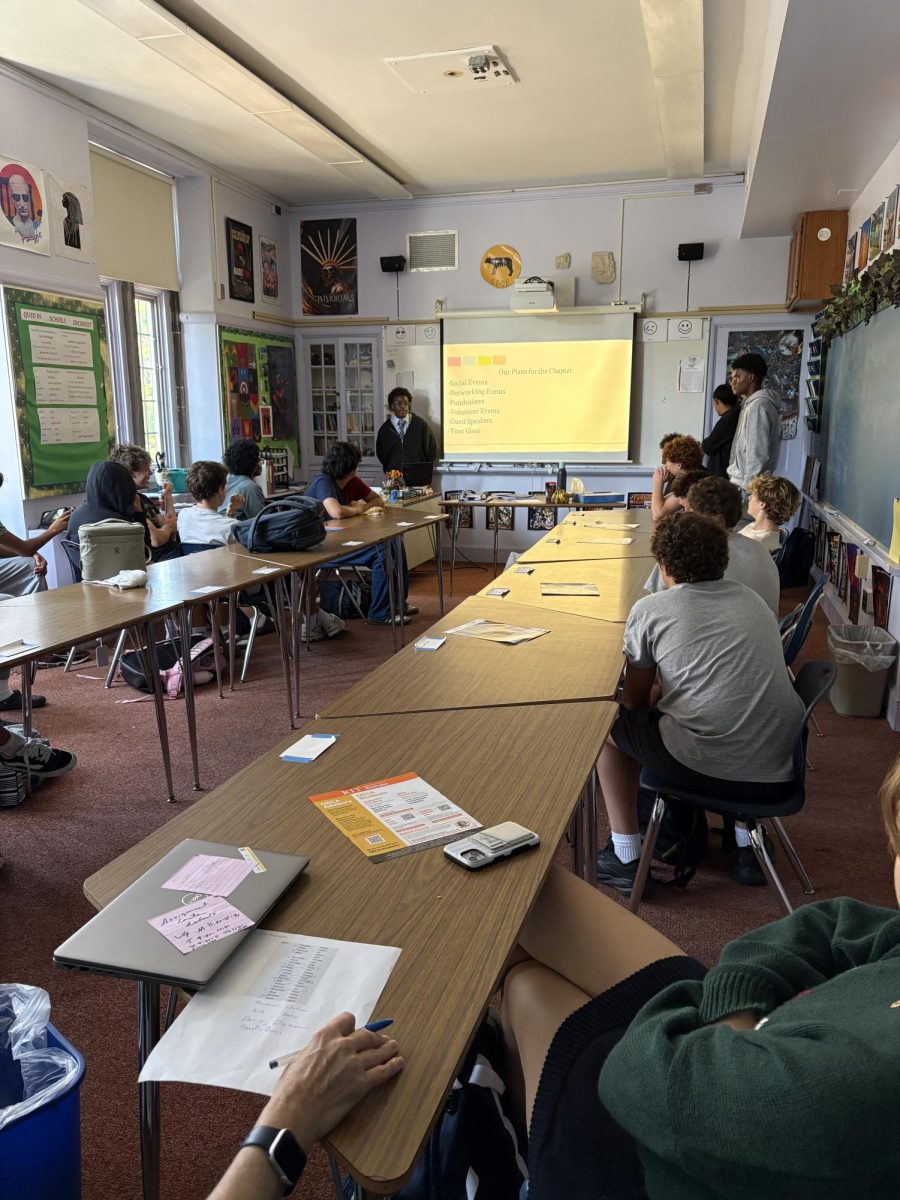
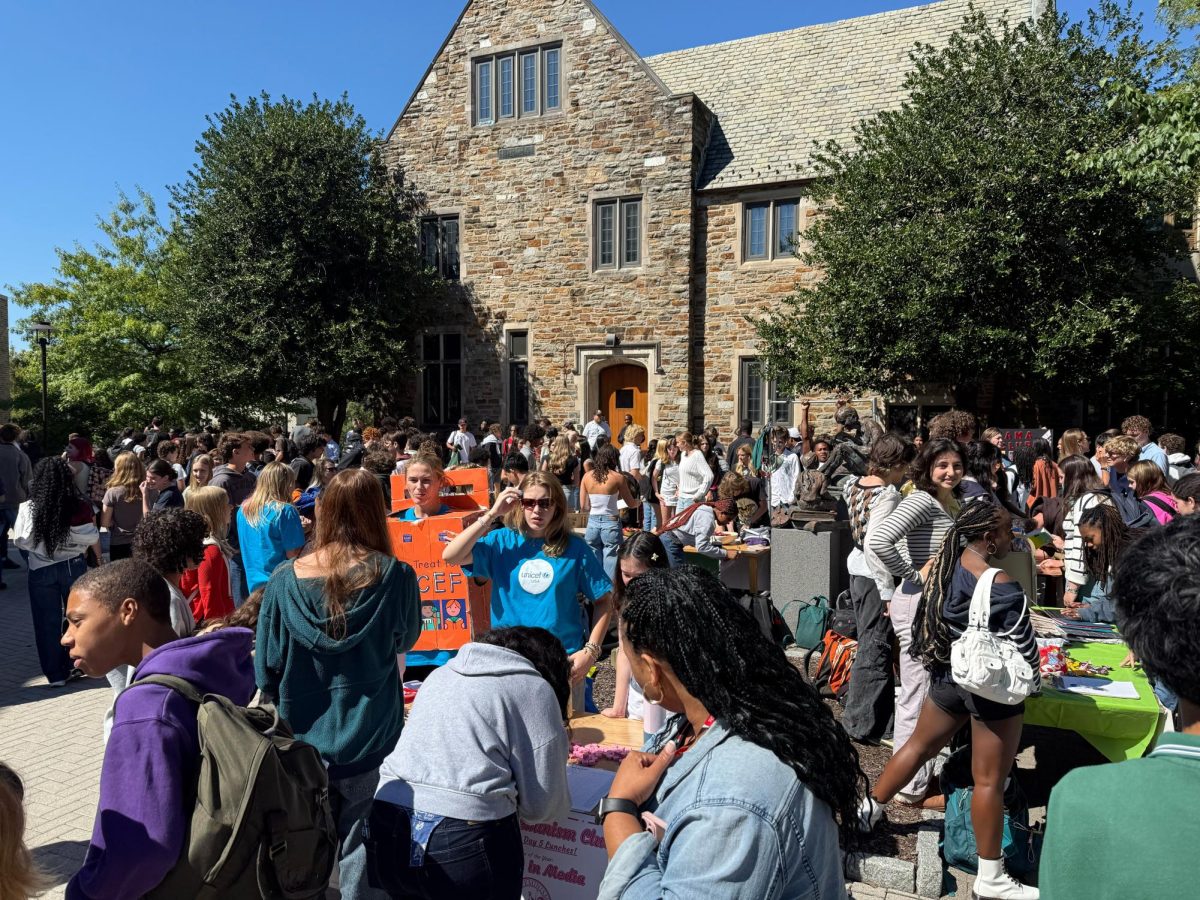
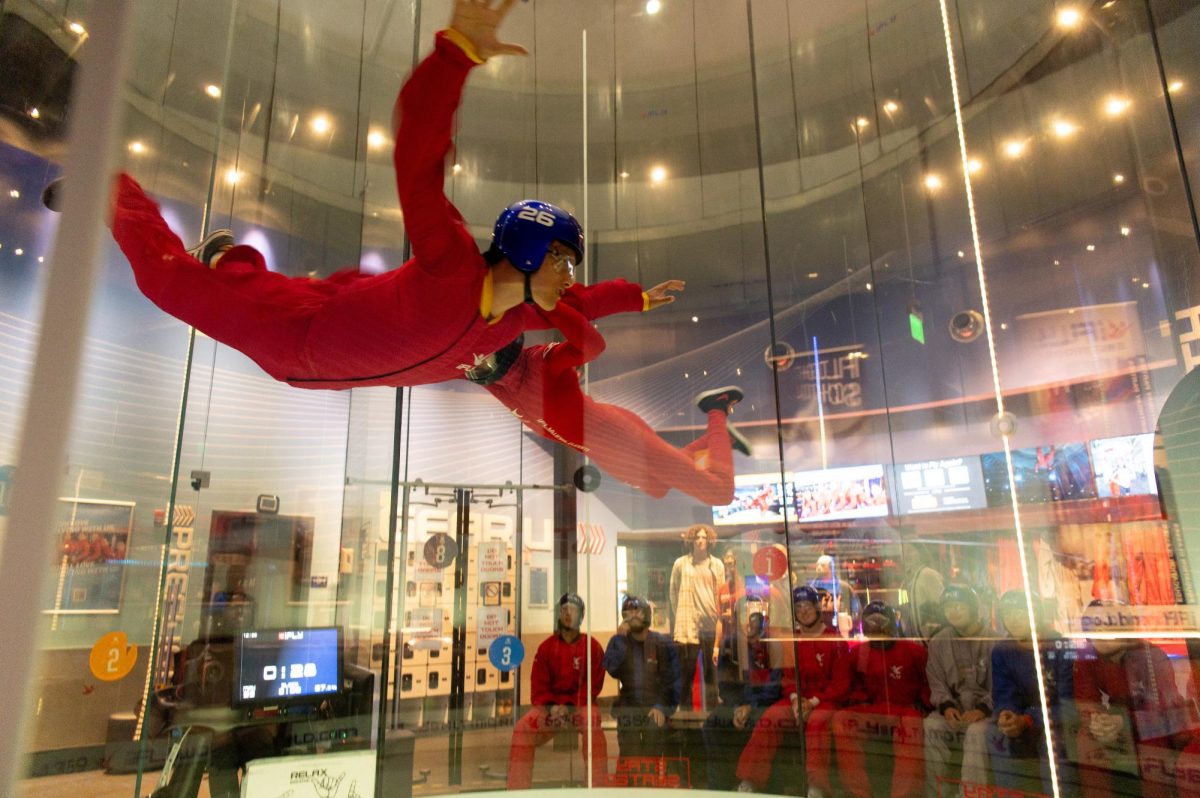
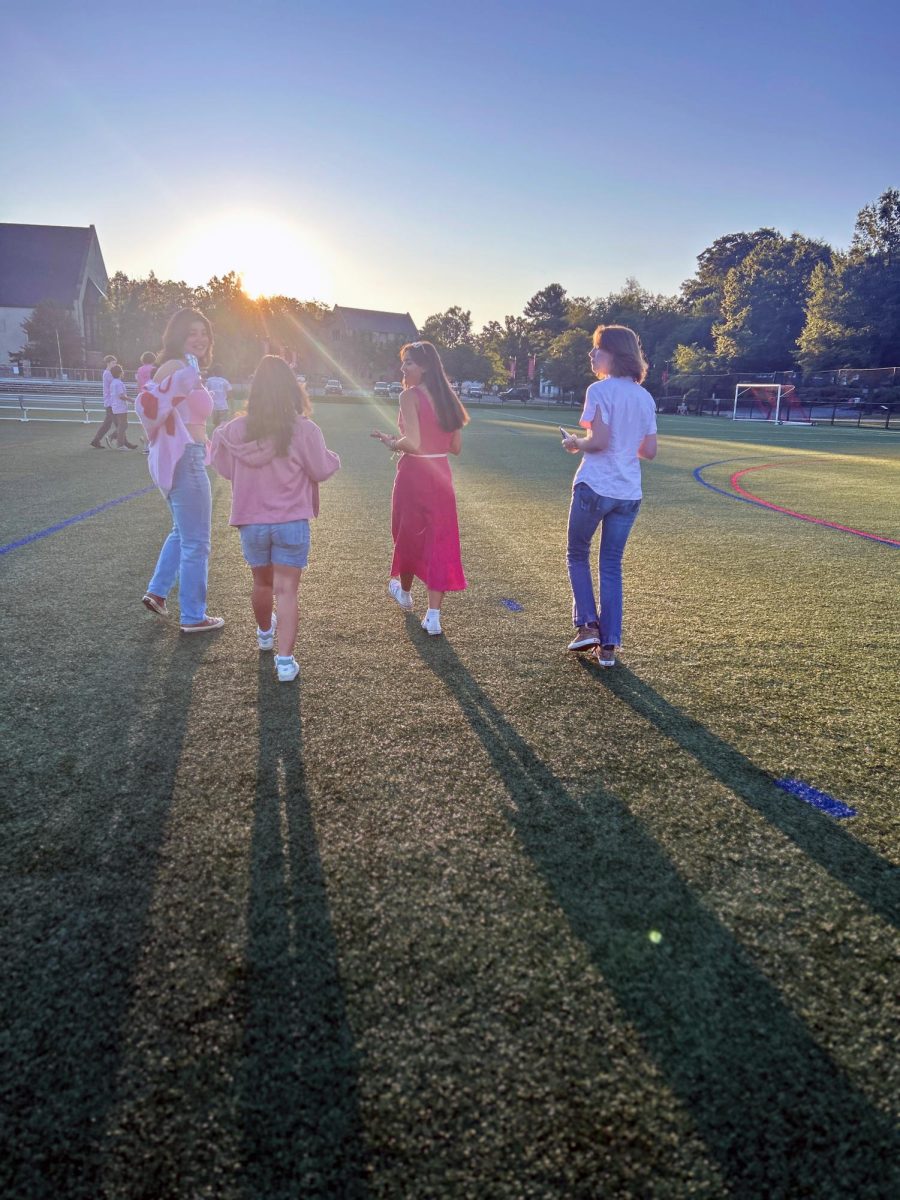




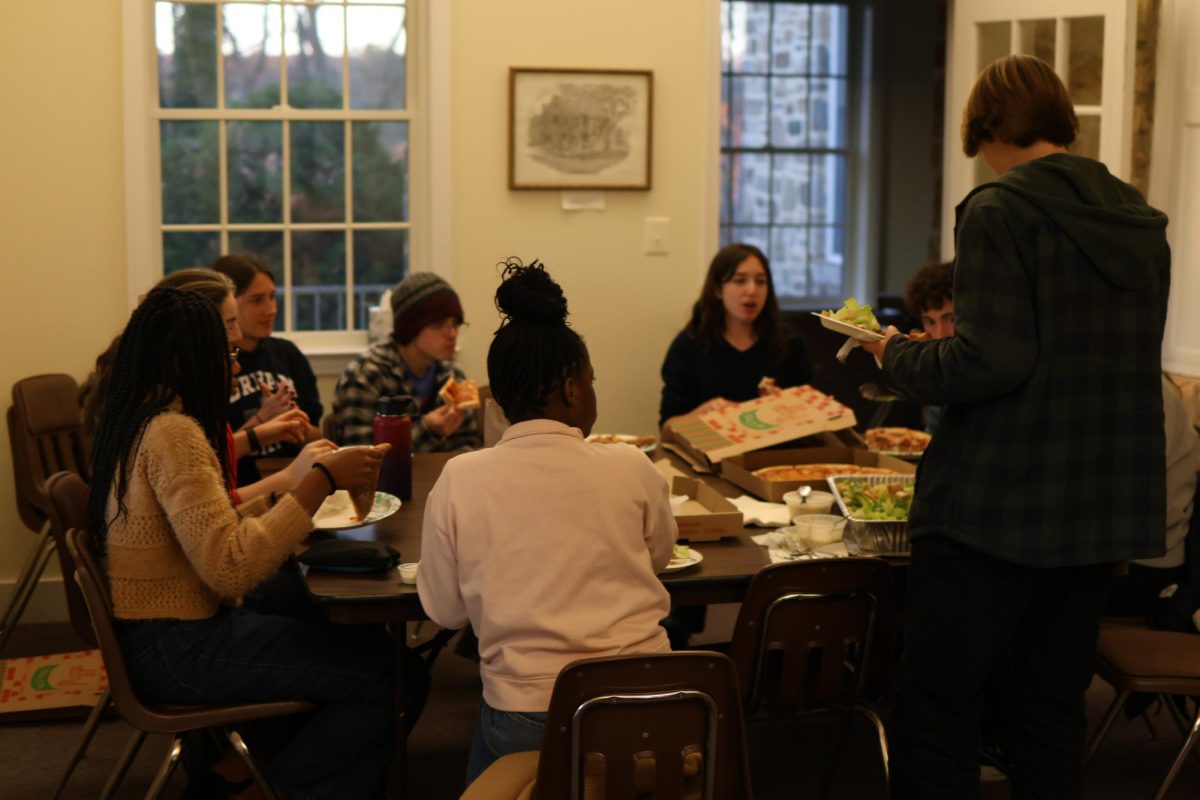

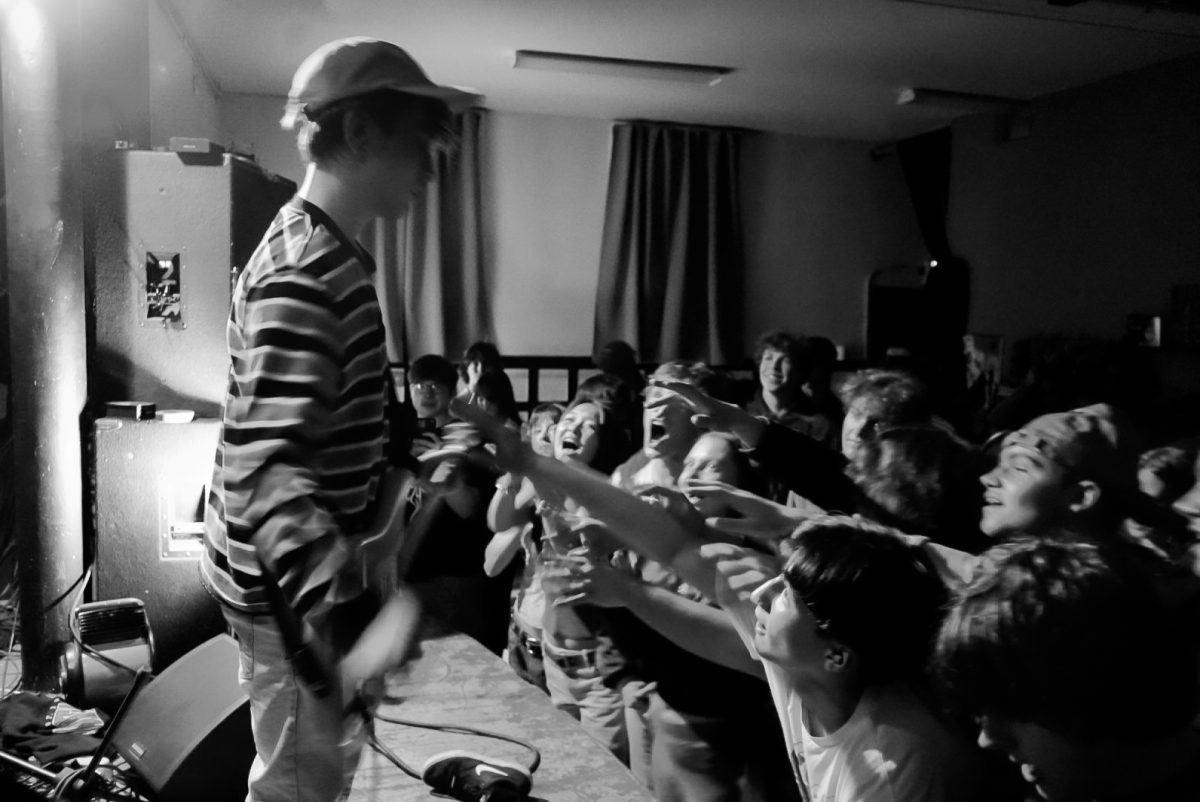

![How Freestyle Club Began [Podcast]](https://thequakerquill.org/wp-content/uploads/2025/05/charly-alvarez-Jv9untmB7G4-unsplash-1200x800.jpg)
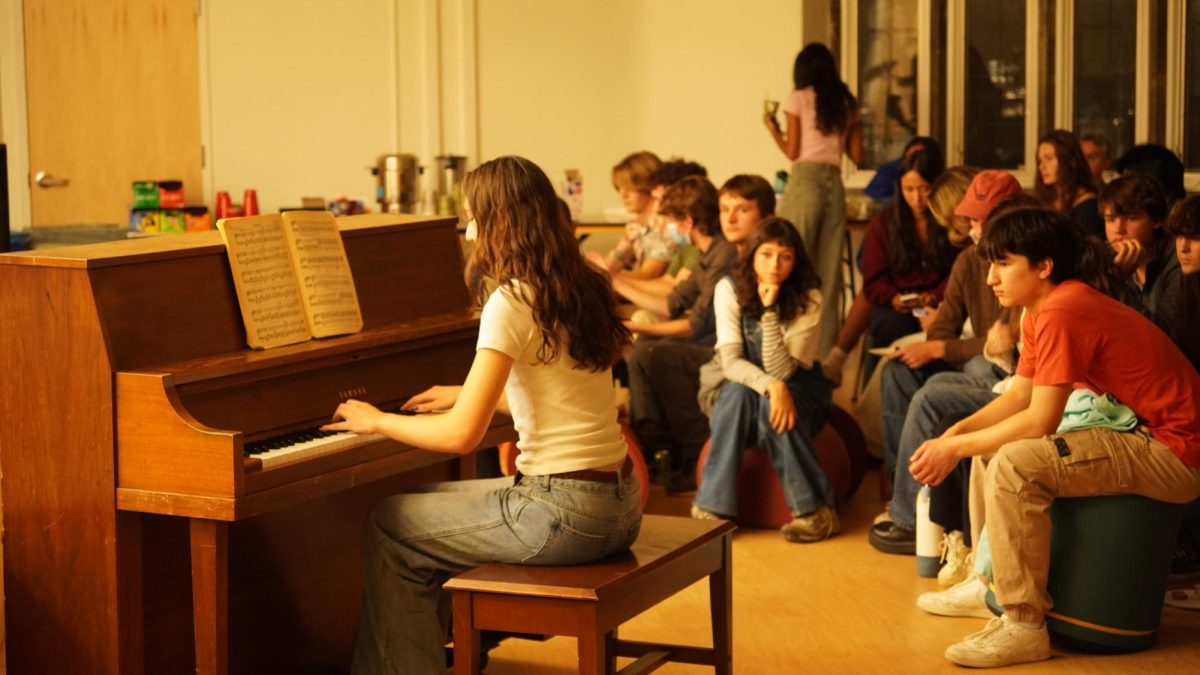
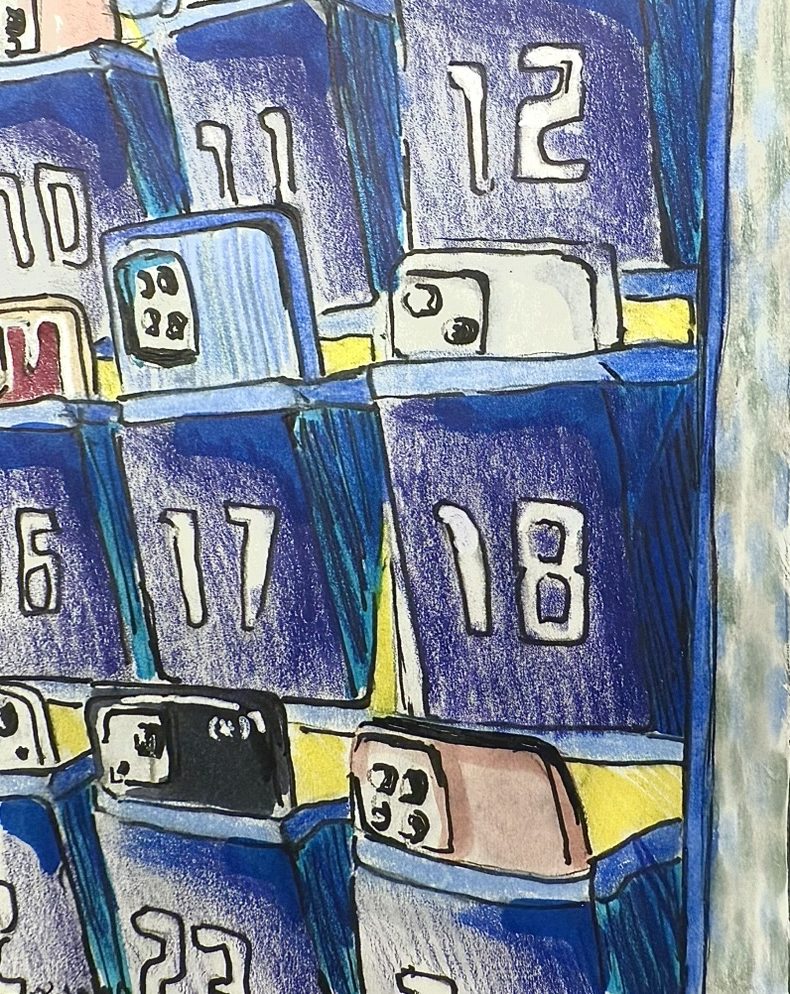
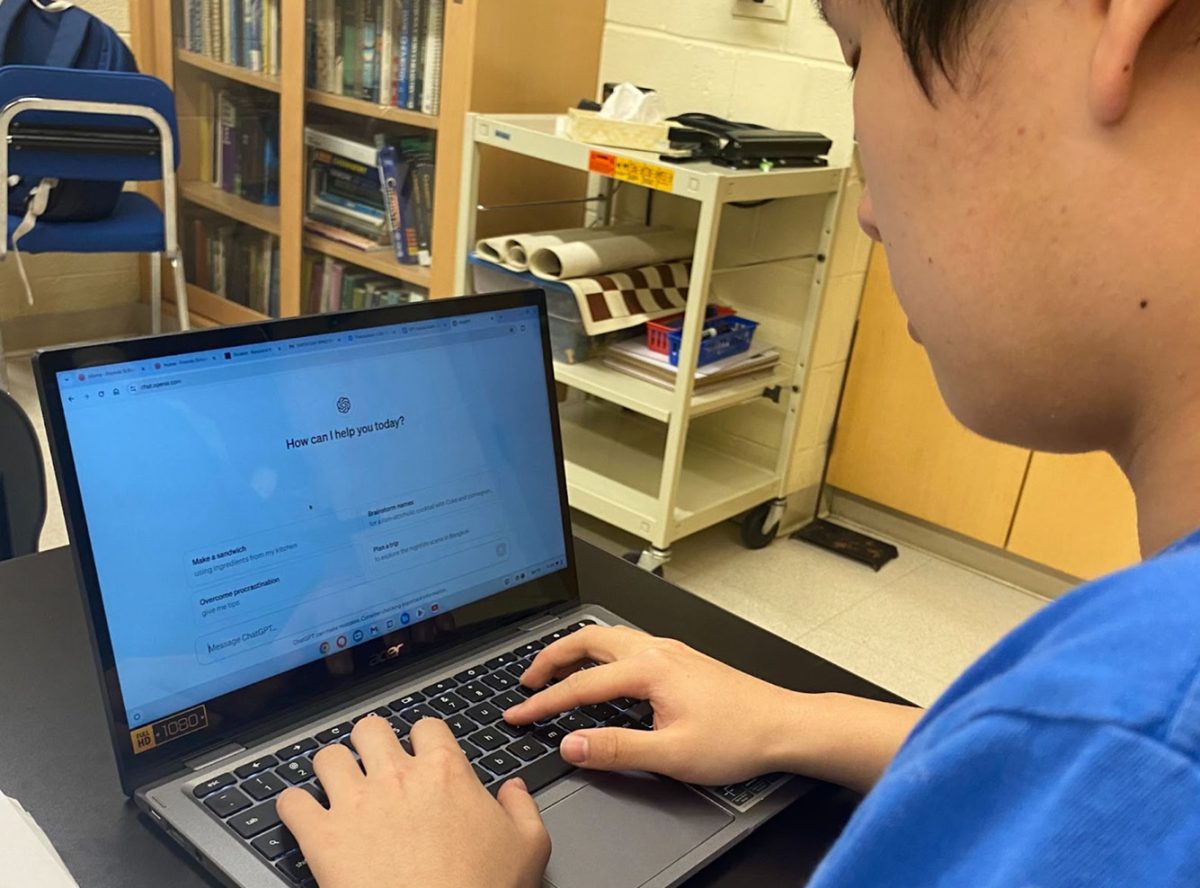





![What makes you feel good about yourself? [Podcast]](https://thequakerquill.org/wp-content/uploads/2025/10/madison-oren-uGP_6CAD-14-unsplash-1200x800.jpg)

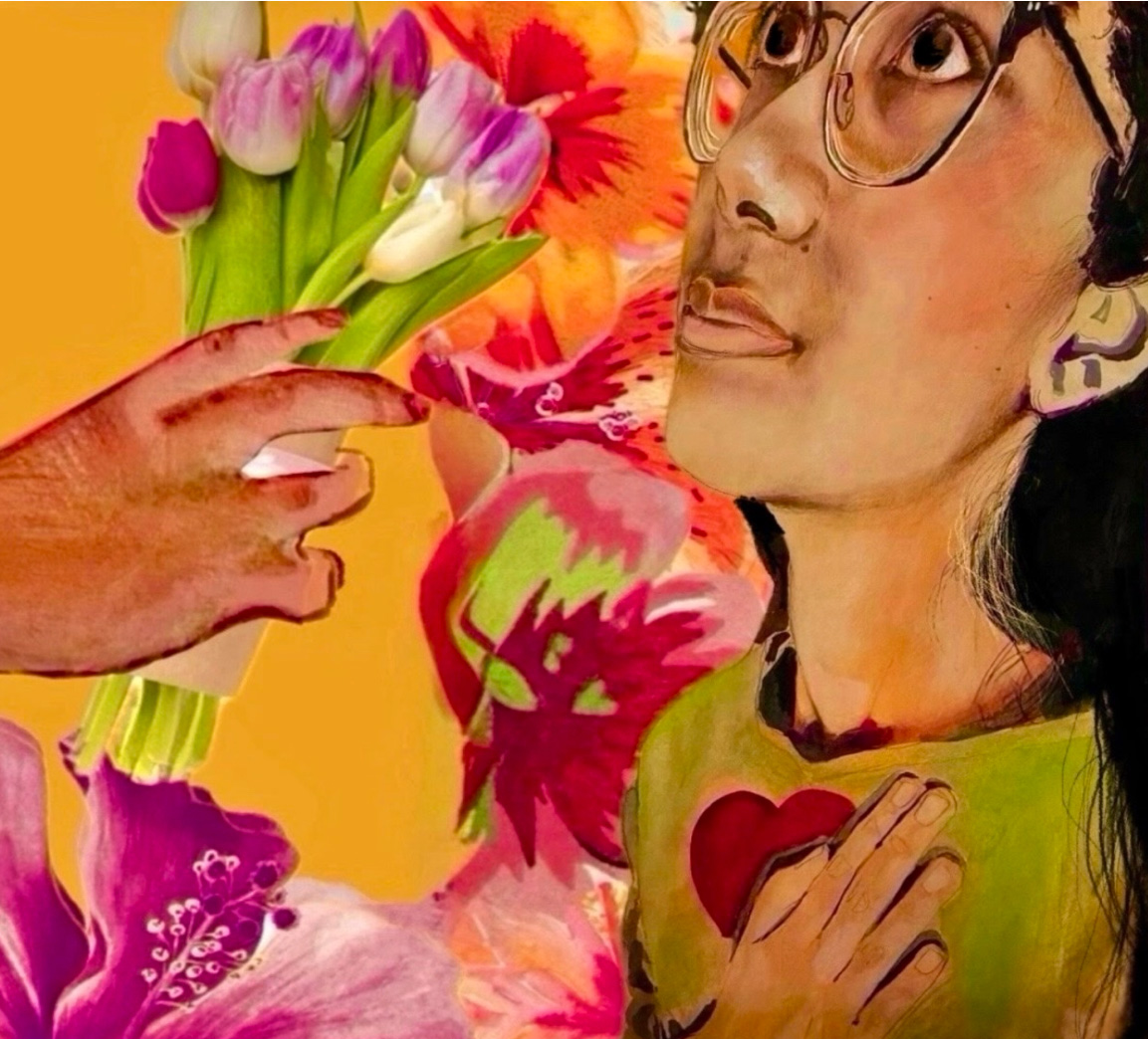


![A Phone Ban at Friends? [Podcast]](https://thequakerquill.org/wp-content/uploads/2025/05/magenta-VrRT19_ZjUY-unsplash-1200x900.jpg)
